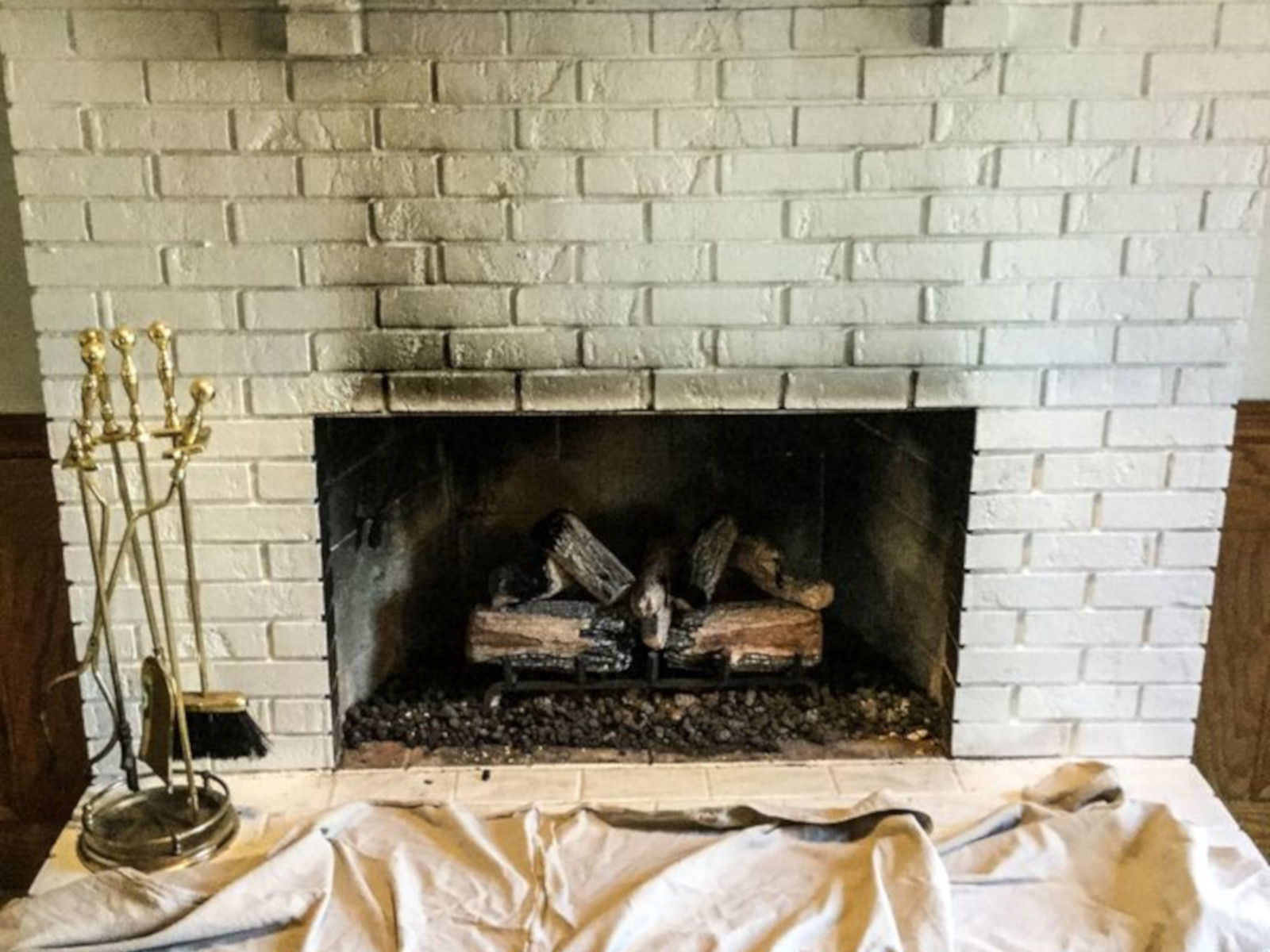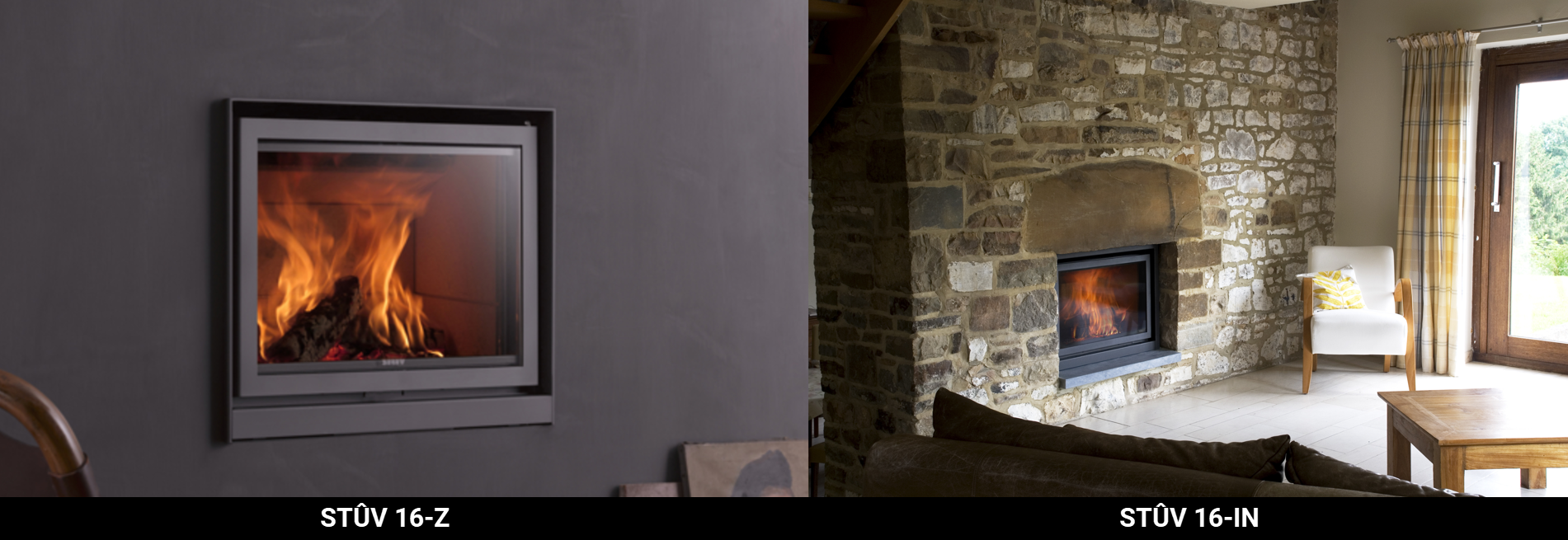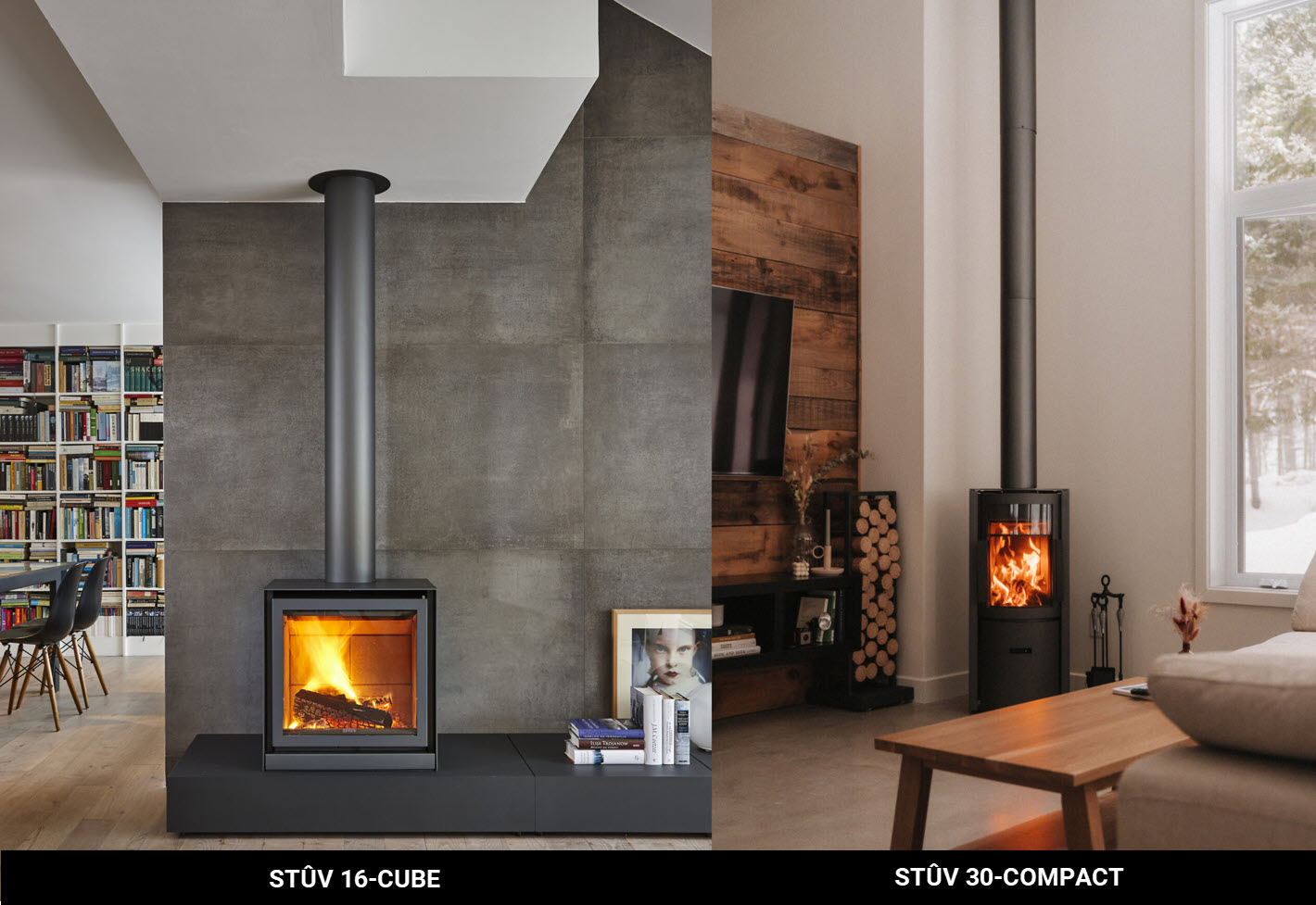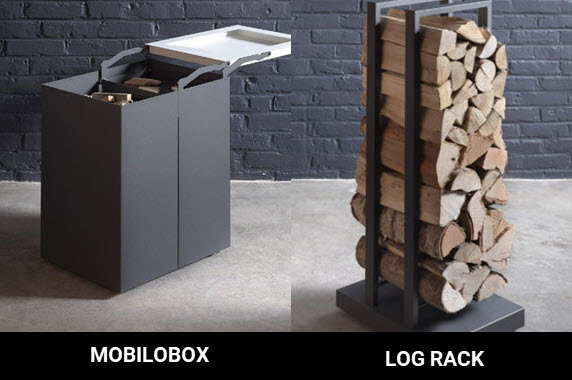Do I need to connect an outside air intake to my Stûv wood-burning appliance? Good question! Read on to better understand the purpose an outside air intake serves and if one is necessary for your project.
What exactly is an outside air intake and what does it do?
A fire needs oxygen to burn. An outside air intake is a flexible pipe, four to six inches in diameter, that supplies your stove or fireplace with air without taking it from inside your home.

How do I know if I need an outside air intake?
Here are a few situations in which connecting an outside air intake will help your appliance run optimally:
- •Type of building
Some buildings, such as newly built passive homes, may require that a wood-burning stove or fireplace be directly connected to an outside air intake. This is so the air supply available inside the residence is not affected. It’s important to know your building’s construction parameters before installing such an appliance.
- •Room’s surface area
When choosing a wood-burning stove or fireplace, it’s important to take into consideration the surface area of the room in which it will be installed. Even if you connect your Stûv appliance to an outside air intake, a stove or fireplace that is not the right size for the room will not have optimal combustion. Our network of certified experts can help you choose the ideal model for your needs.
- •Different ventilation systems in the home
Different ventilation systems can also affect air supply to your appliance. One example is range hoods, which are increasingly powerful. When you are lighting a fire or adding wood to your stove or fireplace, a range hood can create negative air pressure in your home, causing smoke to backflow into the room.
- •Municipal bylaws
Some municipalities require the installation of an outside air intake. Check with your local authorities.
What problems can be avoided by installing an outside air intake?
A Stûv wood-burning appliance that is not connected to an outside air intake may not burn efficiently and can cause unwanted effects during use:
-
- •Backdraft smoke from the chimney;
- •Low combustion and small flames;
- •Blackened combustion chamber;
- •Darkened glass

When should I install an outside air intake?
Although you can install an outside air intake after you’ve already begun using your Stûv stove or fireplace, we recommend installing it in the early stages of your project. It will be much simpler and cheaper.
In conclusion, connecting an outside air intake to your Stûv wood-burning stove or fireplace is strongly recommended. It will optimize your appliance’s combustion while preventing unpleasant effects, such as smoke backflow. Our extensive network of certified specialists can help you with your project and properly assess your outside air-supply needs to maximize your new Stûv’s efficiency.



